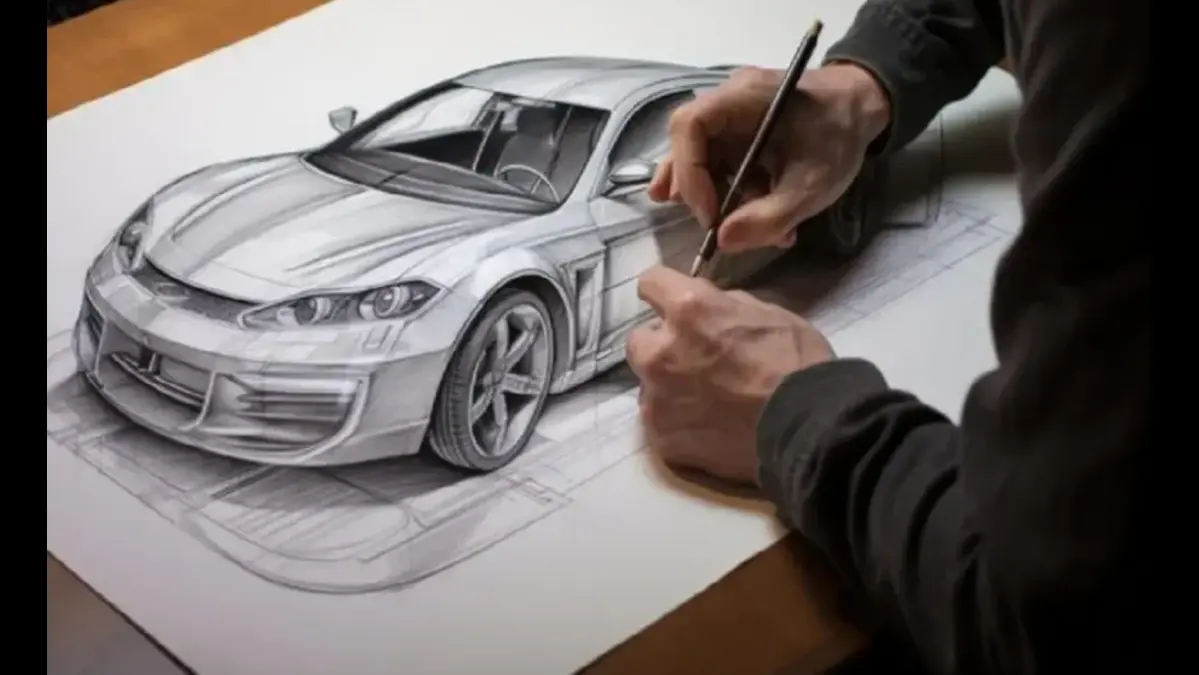Introduction to drawing:burmhcczepe= car
Welcome to the world of drawing:burmhcczepe= car, where creativity knows no bounds and imagination takes the lead! Whether you’re a seasoned artist or just starting on your artistic journey, mastering the Art of drawing can be both fulfilling and rewarding. In this blog post, we’ll delve into the intricate process of capturing the essence of a car on paper. So grab your pencils, sharpen your skills, and explore the tips and techniques to bring that sleek automobile to life through your drawings!
Understanding the basics: Line, Shape, and Form
When mastering the Art of drawing:burmhcczepe= car, understanding the basics is crucial. Let’s delve into the foundation of drawing: line, shape, and form.
Lines are more than marks on paper; they convey movement and structure. Experiment with different types of lines—straight, curved, thick, and thin—to bring your car sketch to life.
Shapes play a significant role in creating the overall composition of your drawing. Break down complex elements of the car into basic shapes like circles, rectangles, and triangles. This simplification will help you tackle intricate details with ease.
Form adds dimensionality to your artwork by capturing how light interacts with surfaces. Consider shadows and highlights when shading your car drawing:burmhcczepe= car to give it depth and realism.
By honing your skills in line work, mastering shapes, and understanding form dynamics, you’re laying a solid groundwork for creating stunning car illustrations that pop off the page.
Picking the suitable materials for drawing:burmhcczepe= car
When drawing:burmhcczepe= car, selecting the suitable materials can make a significant difference in the outcome of your artwork. Start by choosing quality paper suitable for drawing with pencils or markers. Thick paper prevents bleeding and allows for better blending of colors.
Invest in a range of pencils with varying degrees of hardness to achieve different levels of shading and detailing in your car drawings. Additionally, having an eraser handy is crucial for correcting mistakes and refining small areas.
Consider using fine-line pens or markers to outline and add crisp details to your car sketches. Experimenting with different textures, like charcoal or pastels, can also bring depth and richness to your car illustrations.
Remember the importance of proper lighting and workspace setup when working on your drawings. Good lighting will help you see details clearly, while a comfortable workspace will enhance your focus and creativity as you bring cars to life on paper.
Step-by-step guide on drawing a car from different angles
When drawing:burmhcczepe= car from different angles, understanding perspective is critical. Start by sketching the basic shapes of the vehicle using light lines – this will serve as your foundation. Next, focus on the proportions and angles to capture the essence of the car accurately.
Once you have established the outline, gradually add details such as wheels, windows, and doors. Remember to pay attention to how these elements align with the overall structure of the car.
Experiment with various perspectives, such as side view, front view, and three-quarter view, to enhance your skills and bring depth to your drawing:burmhcczepe= car. Don’t be afraid to make mistakes—they are part of learning.
Practice shading techniques to create dimension and realism in your artwork. You’ll develop a well-rounded skill set that will elevate your work by mastering different angles and perspectives when drawing a car.
Adding details and shading techniques for realism
Now that you have the basic structure of your car drawing, it’s time to elevate it with details and shading techniques. Adding intricate details like headlights, windows, and tires can bring depth and realism to your artwork. Pay attention to proportions and angles to ensure accuracy.
Shading is crucial to creating realistic drawing:burmhcczepe= car . Mastering techniques such as hatching, cross-hatching, stippling, and blending can add dimensionality and texture to your car illustration. Start by identifying the light source in your composition to determine where shadows fall naturally.
Experiment with different pencil grades to achieve varying levels of darkness and lightness in your shading. Remember that practice is critical to refining your shading skills. Don’t be afraid to make mistakes; they are all part of learning.
By incorporating detailed elements and employing effective shading techniques, you can transform a simple line drawing into a lifelike representation of a car on paper. So grab your pencils, sharpen your skills, and let creativity guide you through this artistic journey!
Tips for beginners to improve their drawing skills
For beginners looking to enhance their drawing:burmhcczepe= car skills, practice is critical. Start by regularly sketching simple shapes and lines to build hand-eye coordination and muscle memory. Experiment with different pencil grips and pressures to control the intensity of your strokes.
Don’t be afraid to make mistakes – learning from them will improve you. Study other artists’ work for inspiration, but remember that everyone has their unique style. Embrace yours and let it shine through in your drawings.
Joining art communities or taking online tutorials can provide valuable feedback and guidance as you progress. Remember, Rome wasn’t built in a day; improvement takes time and dedication. Set achievable goals for yourself, whether mastering a new technique or completing a drawing every week.
Above all, stay passionate about drawing! The more you enjoy what you’re creating, the more motivated you’ll be to keep practicing and growing as an artist.
Conclusion: Practice makes perfect – keep honing your skills
Practice makes perfect – keep honing your skills. drawing:burmhcczepe= car a car may seem challenging initially, but with dedication and practice, you can master captArtng its sleek lines and contours on paper. Remember, drawing is a skill that improves over time, so don’t get discouraged by initial setbacks. Keep experimenting with different techniques, study the fundamentals, and, most importantly, enjoy creating art. Your jArtney to becoming a proficient car artist starts now – embrace it wholeheartedly!
